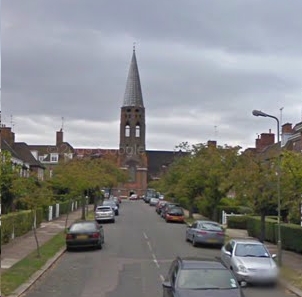The Edinburgh and Northern Railway (later to become the North British) was seeking to drive its lines northwards from Edinburgh to Aberdeen.
Bridge technology in the late 1840s was not sufficiently well developed to allow the Firth of Forth to be crossed, and the finances of the railways at the time, which were mainly fairly small and locally based, would probably not have made bridges possible in any case. (Even in the 1880s the Forth Bridge was jointly financed by four companies.)
.
So another answer had to be found. Passenger traffic was not the main issue. Passengers were apparently willing to accept short ferry trips with most of the journey being by train; no doubt that was greatly preferable to a sea voyage from Granton or Leith to Aberdeen or, even worse, a journey by road. The real problem was goods traffic, as trans-shipment of goods from train to boat and boat to train was slow, labour-intensive and risked damage to the consignments.
.
So another answer had to be found. Passenger traffic was not the main issue. Passengers were apparently willing to accept short ferry trips with most of the journey being by train; no doubt that was greatly preferable to a sea voyage from Granton or Leith to Aberdeen or, even worse, a journey by road. The real problem was goods traffic, as trans-shipment of goods from train to boat and boat to train was slow, labour-intensive and risked damage to the consignments.
An answer was found in the form of the 'Floating Railway' ferry system devised by Thomas Bouch, then a youthful and successful engineer untainted by the later Tay Bridge disaster.
Passengers were conveyed by conventional ferry ...
... from a station on Granton Pier ...
... to Burntisland, where their connecting train would speed them seamlessly to Aberdeen.
... from a station on Granton Pier ...
... to Burntisland, where their connecting train would speed them seamlessly to Aberdeen.
Freight wagons, however, would be rope-hauled via the equivalent of today's "linkspan" ...
... onto a fleet of paddle steamers. Yes, the ride would have been undulating in the extreme, but wagons then were short wheelbase four-wheelers well able to cope with a little (!) unevenness of track.
The service became quite intensive, the "Balbirnie" in 1863 operating day and night with two crews each working 12 hour shifts. Although the system was mainly for goods wagons, empty passenger carriages and occasionally locomotives were conveyed, as the ferry was the most convenient way of transferring stock to the different parts of the railway system. The alternative was to send them by rail over other companies' lines which would have incurred charges.
So it was that in 1884 an enterprising crook businessman, Jabez Samuel Balfour, purchased a surplus vessel from the North British company together with the necessary moveable cradles and winding engines and started a train ferry service from Langstone near Havant (Hampshire), on the branch to Hayling Island, to Bembridge on the Isle of Wight.
the remains of Langstone wharf
At the island end, unloading would be at St Helen's Quay (labelled "slip" at bottom right of this 1908 map) ...
... whence goods wagons could be conveyed via the Bembridge branch line to Brading and on to any Island destination.
The service started in 1885, but, like all of Balfour's business projects, it was not successful and ended 3 years later. Meanwhile its progenitor fled to Argentina but was brought back and found his way via numerous court cases into Debtors Prison.
Nevertheless the service was the first ever train ferry service in England and the second in the world.
------------------------------------------------------------------
fbb and Mrs are off to Preston today
via Southern Railway (without handcuffs?)
and Virgin Trains.
Returning south on Monday.
Blogging should be uninterrupted.
------------------------------------------------------------------
Next Blog : due Sunday April 1st





















































